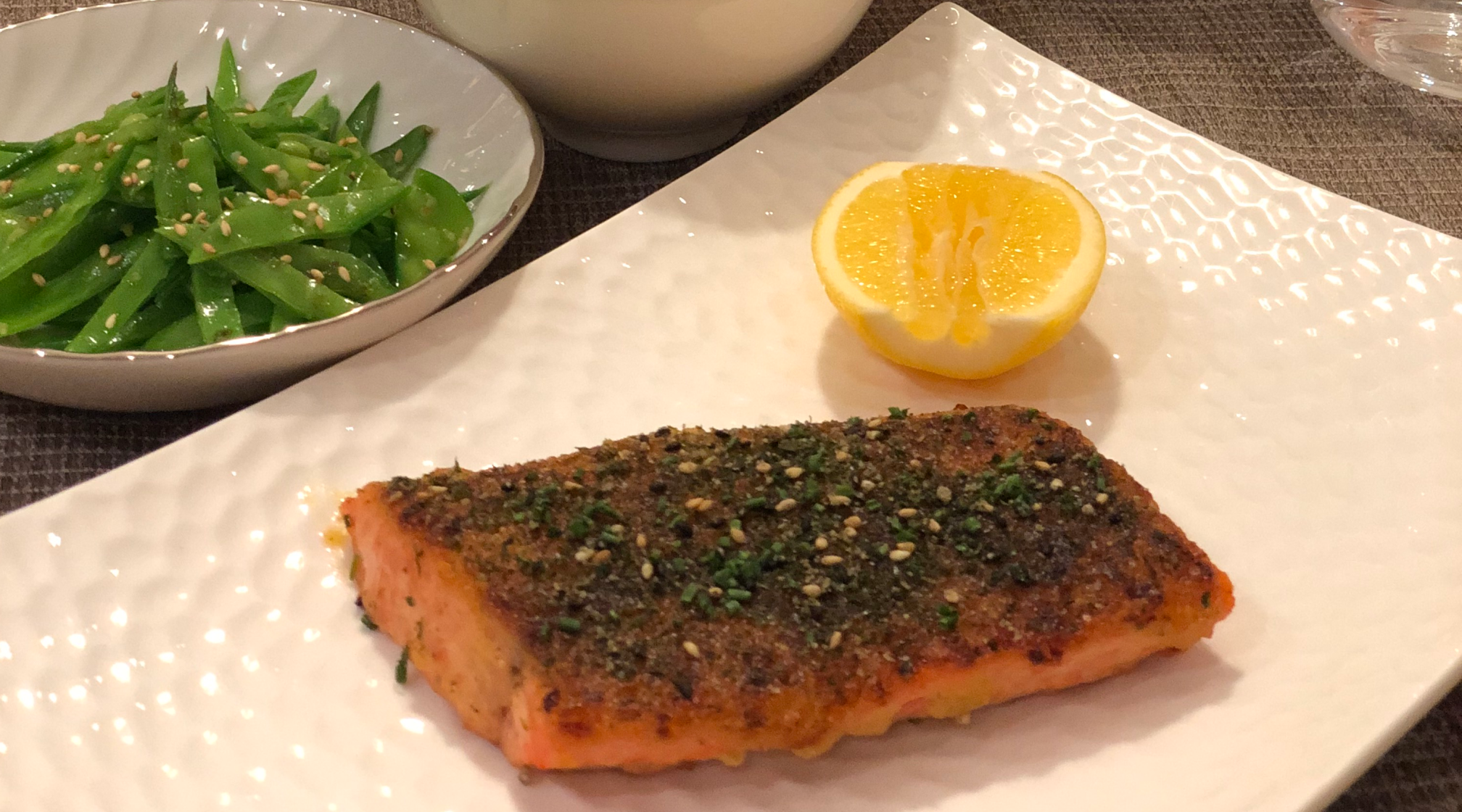Trout With Yuzu Kosho Crust And Maitake Mushroom Chazuke
Specifically designed by Chef Scott Nishiyama to pair with JINSEI Pinot Noir
I came up with this dish after eating a phenomenal meal at StoneMill Matcha in San Francisco. Chazuke is a very simple dish of leftover rice with green tea poured over it. This is deeply satisfying on its own, but I decided to up the ante and add meaty maitake mushrooms to the rice, and fortify the chazuke with a dashi base and dried shiitake mushrooms to give it an umami overload.
Mt. Lassen trout is a superior farmed fish from Northern California, and has none of the “fishy-ness” that people associate with trout. Its flesh is delicate and fatty, and is a perfect foil for the robust flavored crust. If you can’t find this fish, a high-quality salmon will also work.
Serves 4
Total Time: 2 hours
Active Time: 2 hours
Ingredients
- Two 1-2 pound trout filets, skin removed
- 2 T yuzu kosho*
- ¼ c butter, softened
- 3 T awase miso paste
- 2 T sugar
- 2 T yuzu juice*
- 1 c Japanese short grain rice, preferably koshihikari rice
- ½ pound maitake mushrooms
- 2 ½ c dashi
- 8 dried shiitake mushrooms
- 2 T mirin
- 4 T sake
- white shoyu
- Furikake (optional)*
- 2 T minced chives
Steps
Cleaning Trout
Clean the trout filets under cold water to remove any residual scales. Pat dry with a towel. With a sharp knife, trim off the belly section which is much thinner and will overcook anyway. You can cook this piece separately or use as a crudo. Likewise, if the tail end of the filet is thin, it can be trimmed as well and reserved for another use. Place cleaned filet in your refrigerator.
Processing Yuzu Kosho Butter
In a food processor, add the butter, miso, sugar, yuzu kosho, and yuzu juice. Process the mixture until it is homogenous. If using right away, keep at room temperature, otherwise it can be stored for a week in the refrigerator.
Preparing Rice and Mushrooms
Cook the rice according to the directions. Clean the maitake mushrooms by trimming a little bit of the bottoms so that the “leaves” of the mushroom are easy to pull apart. Saute the mushrooms in a very hot pan with a few tablespoons of canola oil. Season the mushrooms with salt and pepper. When placing the mushrooms in the pan, resist the urge to stir or move the mushrooms. Allow them to develop a caramelization which will give them a nice meaty flavor. Once they are nicely browned, turn them carefully and continue to cook until they are tender. Drain on a paper towel. Reserve.
Making Dashi
In a heavy pot, add the mirin and sake and bring to a boil. When it has reduced to half its volume, add the dashi and dried mushrooms. Bring to a simmer and allow the mushrooms to infuse into the dashi. Strain out the mushrooms and they can be used for another preparation. Season the dashi with the white shoyu. Add more white shoyu if you prefer more seasoning.
Broiling Trout
Preheat your broiler oven to high. On a tray lined with foil, spread a bit of canola oil or spray with Pam. Place the trout on the tray and using a butter knife or spatula carefully spread the yuzu kosho butter onto the top of the fish, covering the entire top in a thin, even layer. Place the fish in the broiler. Monitor the top of the fish, making sure it doesn’t burn – this will happen faster than you think! If the top is browning unevenly, feel free to rotate the tray so the crust browns on all sides. When the crust is nicely browned, remove the fish and allow it to rest for a couple minutes.
Serving
Meanwhile, mix the cooked maitake mushrooms in the rice and portion the rice into bowls. Garnish with the furikake and minced chives. Bring the dashi to a boil and serve in a teapot so that guests may pour it over their rice. Serve the fish alongside the rice.
*Yuzu kosho is a Japanese condiment made from the zest of the yuzu citrus and chilis. Yuzu juice is the juice from the yuzu citrus. Furikake is a Japanese condiment usually made of seaweed, sesame seeds, and salt. All of these items can be found at a Japanese market.
